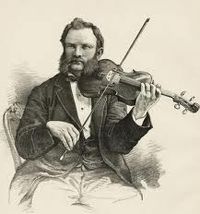Annotation:Lovat Scouts (The): Difference between revisions
No edit summary |
m (Text replacement - "garamond, serif" to "sans-serif") |
||
| (One intermediate revision by one other user not shown) | |||
| Line 1: | Line 1: | ||
'''Back to [[{{BASEPAGENAME}}]]''' | '''Back to [[{{BASEPAGENAME}}]]''' | ||
---- | ---- | ||
<p><font face=" | <p><font face="sans-serif" size="4"> | ||
'''LOVAT SCOUTS, THE.''' Scottish, Quickstep (2/4 time). A Major. Standard tuning (fiddle). AABCCD. Composed by [[Biography:J. Scott Skinner]] (1846-1927), in pipe march style. The tune was printed in the 1920's in a folio by publisher Bayley and Ferguson [http://www.abdn.ac.uk/scottskinner/display.php?ID=JSS0705]. | '''LOVAT SCOUTS, THE.''' Scottish, Quickstep (2/4 time). A Major. Standard tuning (fiddle). AABCCD. Composed by [[Biography:J. Scott Skinner]] (1846-1927), in pipe march style. The tune was printed in the 1920's in a folio by publisher Bayley and Ferguson [http://www.abdn.ac.uk/scottskinner/display.php?ID=JSS0705]. | ||
[[File:skinner.jpg|200px|thumb|left|J. Scott Skinner]] | [[File:skinner.jpg|200px|thumb|left|J. Scott Skinner]] | ||
The Lovat Scouts [http://en.wikipedia.org/wiki/Lovat_Scouts] were a British military unit formed for the Boer War, who saw service in World War I in France, at Gallipoli, and in Egypt and Macedonia. They formed the first sharpshooter unit of the British army, and were the first to employ the 'ghille suit' for camouflage. | The Lovat Scouts [http://en.wikipedia.org/wiki/Lovat_Scouts] were a British military unit formed for the Boer War at the end of the 19th century, who also saw service in World War I in France, at Gallipoli, and in Egypt and Macedonia. They formed the first sharpshooter unit of the British army, and were the first to employ the 'ghille suit' for camouflage. | ||
[[File:lovatscouts.jpg|200px|thumb|right|]] | [[File:lovatscouts.jpg|200px|thumb|right|]] | ||
<br> | <br> | ||
<br> | <br> | ||
</font></p> | </font></p> | ||
<p><font face=" | <p><font face="sans-serif" size="4"> | ||
''Source for notated version'': | ''Source for notated version'': | ||
<br> | <br> | ||
<br> | <br> | ||
</font></p> | </font></p> | ||
<p><font face=" | <p><font face="sans-serif" size="4"> | ||
''Printed sources'': Hunter ('''Fiddle Music of Scotland'''), 1988; No. 358. | ''Printed sources'': Hunter ('''Fiddle Music of Scotland'''), 1988; No. 358. | ||
<br> | <br> | ||
<br> | <br> | ||
</font></p> | </font></p> | ||
<p><font face=" | <p><font face="sans-serif" size="4"> | ||
''Recorded sources'': <font color=teal></font> | ''Recorded sources'': <font color=teal></font> | ||
</font></p> | </font></p> | ||
Latest revision as of 14:17, 6 May 2019
Back to Lovat Scouts (The)
LOVAT SCOUTS, THE. Scottish, Quickstep (2/4 time). A Major. Standard tuning (fiddle). AABCCD. Composed by Biography:J. Scott Skinner (1846-1927), in pipe march style. The tune was printed in the 1920's in a folio by publisher Bayley and Ferguson [1].

The Lovat Scouts [2] were a British military unit formed for the Boer War at the end of the 19th century, who also saw service in World War I in France, at Gallipoli, and in Egypt and Macedonia. They formed the first sharpshooter unit of the British army, and were the first to employ the 'ghille suit' for camouflage.

Source for notated version:
Printed sources: Hunter (Fiddle Music of Scotland), 1988; No. 358.
Recorded sources:
Back to Lovat Scouts (The)
